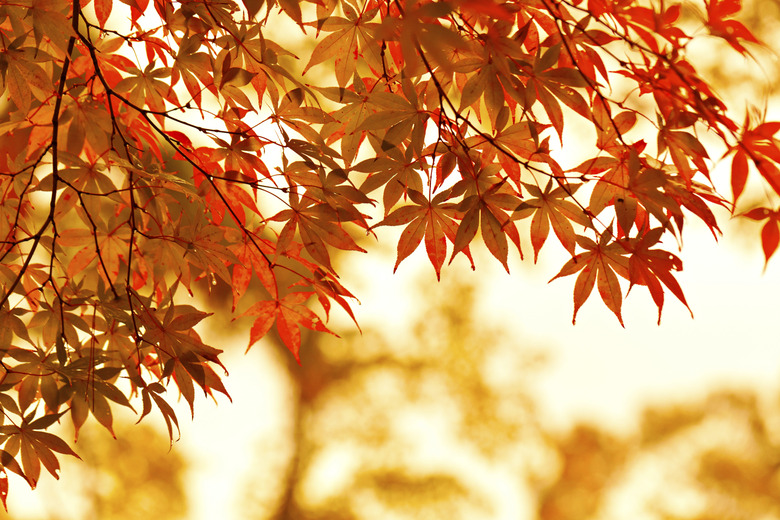Types Of Maple Trees
Maples (Acer spp.) shade our backyards in summer and light up our forests in fall with their fiery foliage. Every maple species has its own unique size, leaf shape, bark texture and fall color, but maple trees are also divided into several broader categories. One distinction important to gardeners as well as lumbermen involves the relative hardness of a maple's wood.
Understanding the Hard/Soft Maple Distinction
Understanding the Hard/Soft Maple Distinction
"Soft maple" isn't a maple species. The term refers to the quality of a maple tree's wood. Maples labeled "soft" are the fast-growing species that seem to shoot up overnight, including garden-friendly landscape trees such as bigleaf (Acer macrophyllum) in U.S. Department of Agriculture plant hardiness zones 5 to 9, red maple (Acer rubrum) in zones 3 to 9, and silver maple (Acer saccarinum) in zones 4 to 9. The rapid plant-cell growth creates wood that can break in wind or ice-storms, although many of these glorious trees stand straight, tall and fully branched for decades.
When someone mentions hard maple, think "hard to break." The limbs and trunks of these trees grow slowly enough that they have time to develop solid structures. Hard maple specimens make better landscape trees for areas with windy winters or frequent ice storms. Only one species is in the hard category however: the rock-star of the maple family, sugar maple (Acer saccharum). Famous for its sweet sap, sugar maple is the national tree of Canada and thrives in USDA zones 4 to 8. Some sources add a second tree to the list of hard maple: black maple (Acer saccharum subsp. nigrum or Acer nigrum). However, it is generally considered a subspecies of sugar maple rather than a species in its own right. It looks similar to the sugar maple, with slightly darker bark, and grows in the same conditions.
Recognizing Hard Maples
Recognizing Hard Maples
Sugar maple is a landscape standout. If you're lucky enough to have this forest giant in your backyard, recognition won't present a big problem. This magnificent tree grows 80 feet tall when cultivated, but it takes its time doing so, averaging only a foot of height growth and 0.2 inch of diameter growth per year for the first three or four decades. Recognize a young sugar maple by the leaves–dark green on top and pale beneath, arranged in a single (simple) pattern on opposite sides of a twig.
One soft maple resembles the sugar maple enough to create potential confusion: the red maple. It too climbs up to scrape the sky, produces reddish new growth and creates fall foliage fireworks as its dying leaves turn scarlet and gold. You can distinguish the red maple from the sugar maple by its growing conditions: the former likes wet soil, the latter well-drained soil. But the leaves also provide telling evidence. If the space between leaf lobes is serrated and in a V-shape, the tree is a red maple. If that space is in a smooth U-shape, it's a sugar maple. In addition, red maple, like all soft maple trees, grows fast and has thin bark rather than the thick, dark, vertically grooved bark of sugar maple.
Getting Back to the Roots
Getting Back to the Roots
Maples are known for their shallow, spreading root systems that help them thrive in wet soils. You might think that sugar maple, as the sole hard maple, would develop deeper roots to hold up the enormous trunks for their several-hundred-year lifespans. You would be partially right.
Sugar maples that grow in low, wet areas have the classic maple root system, shallow and spreading. But unlike most maples, these giants can also grow in the deep, well-drained soil of upland areas. When they do grow upland, they develop deep roots.
